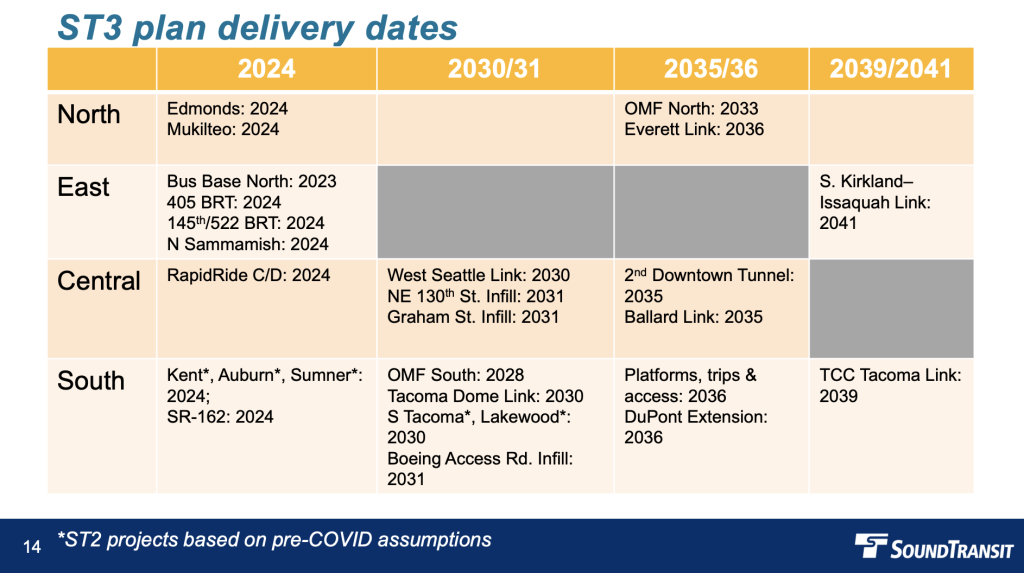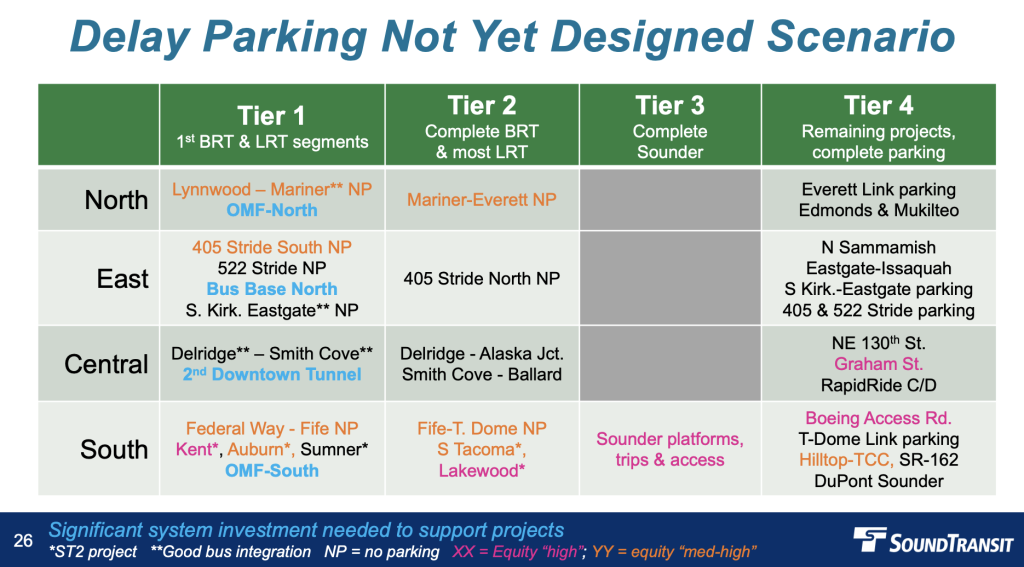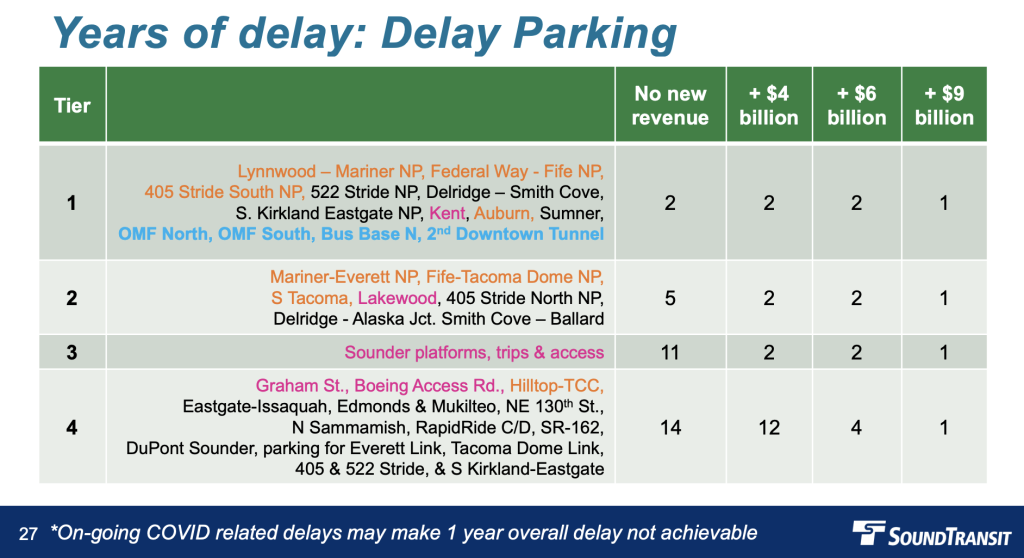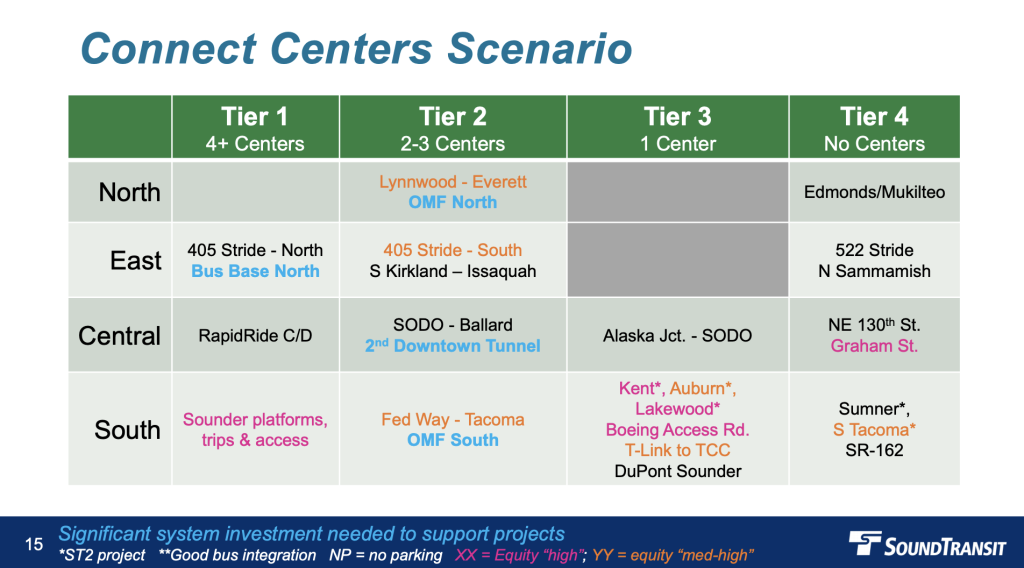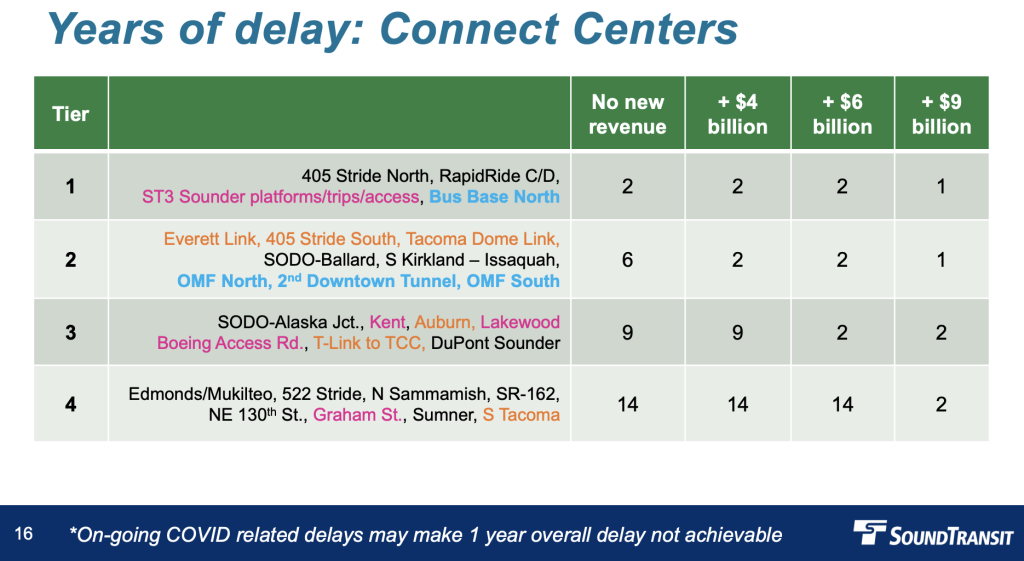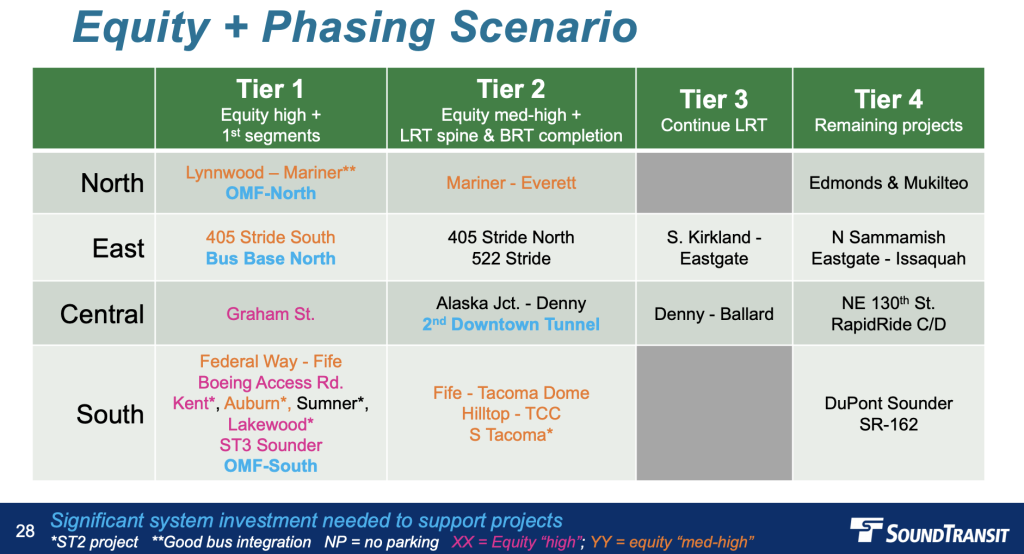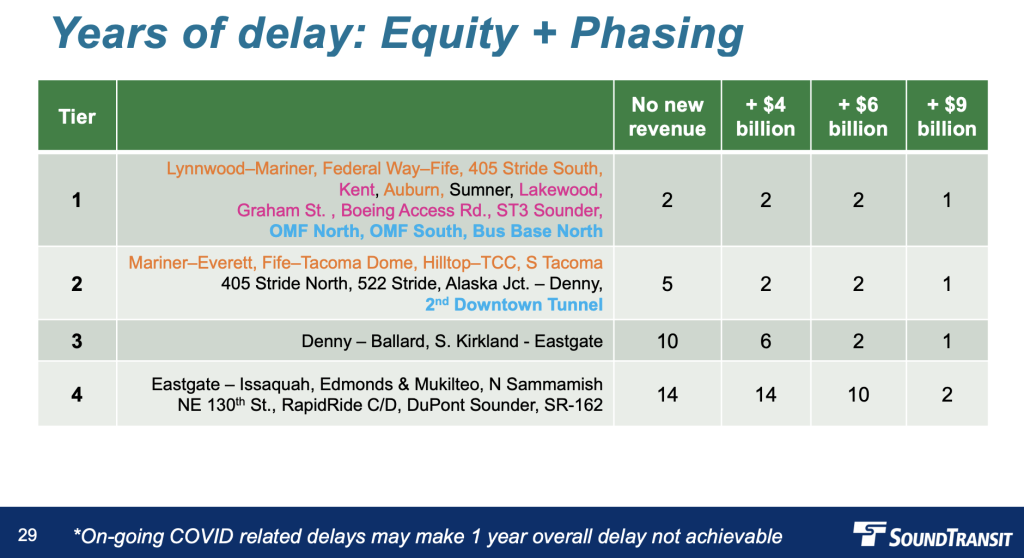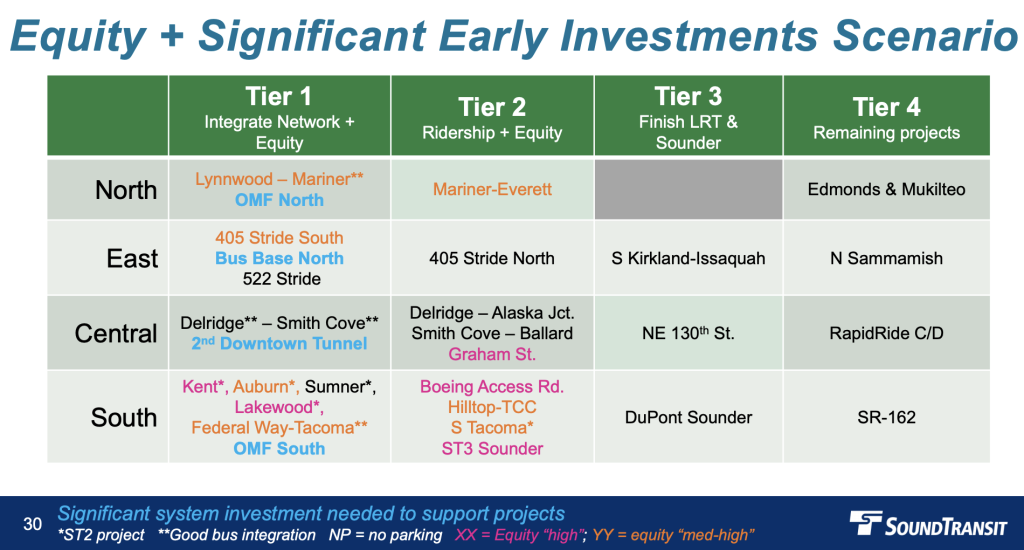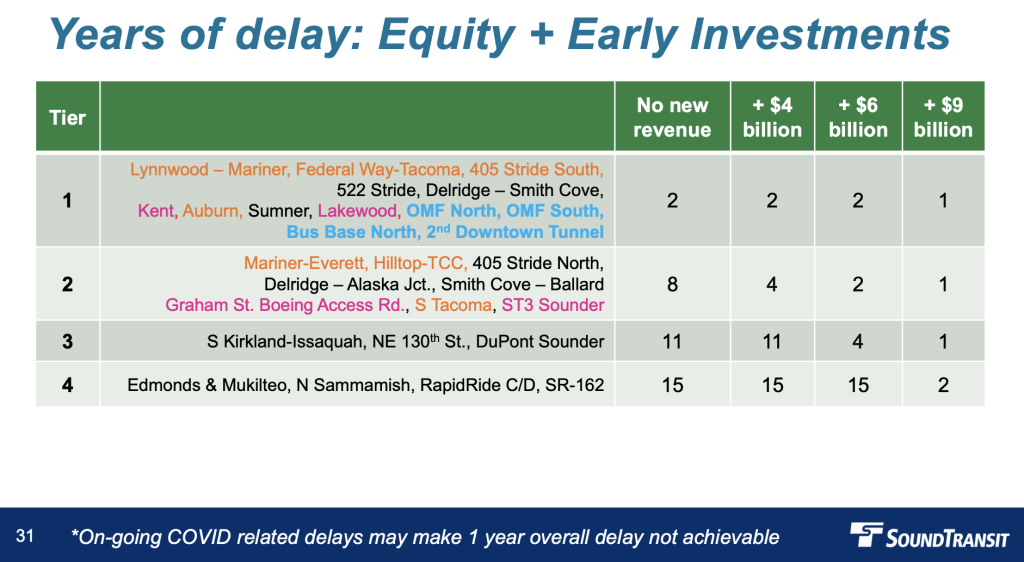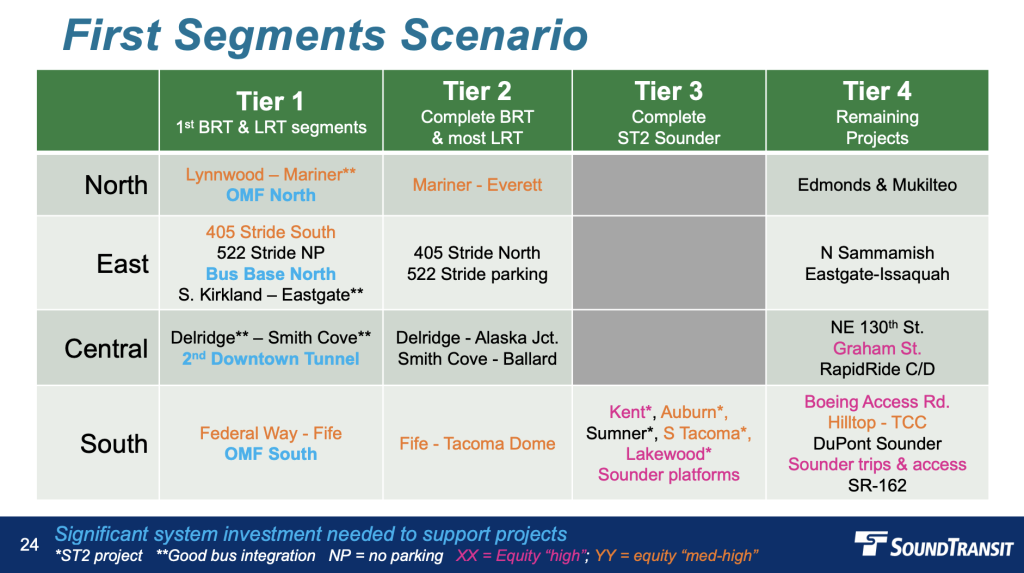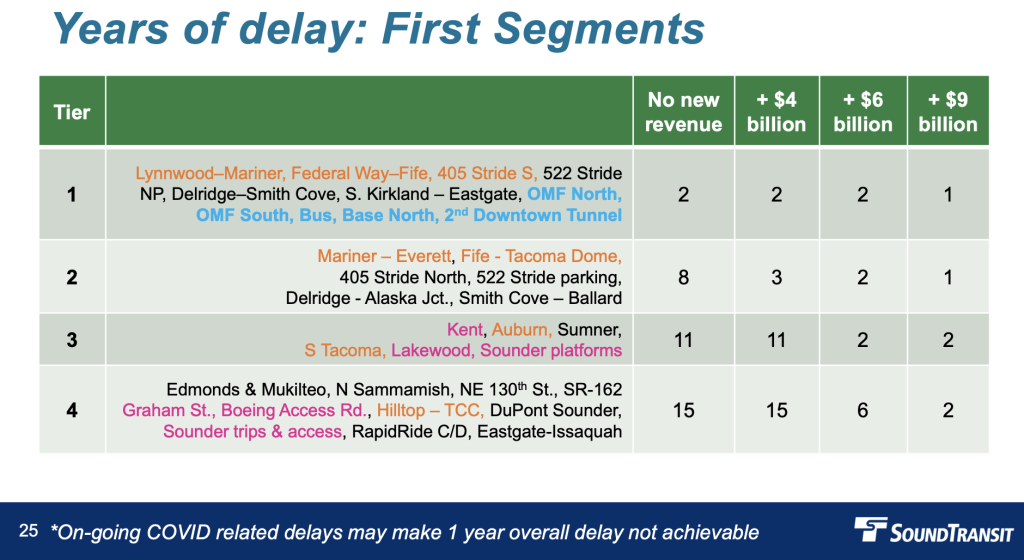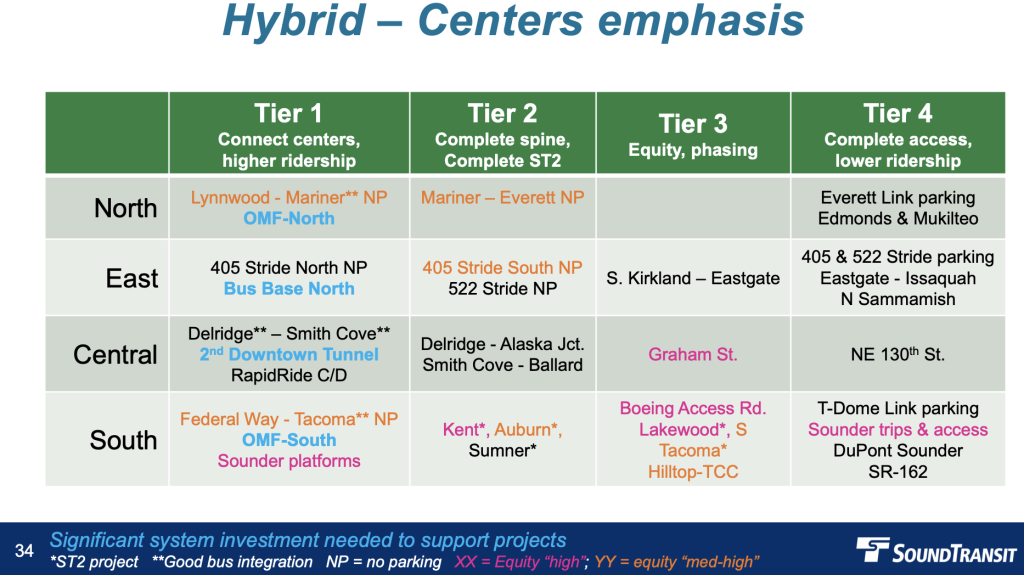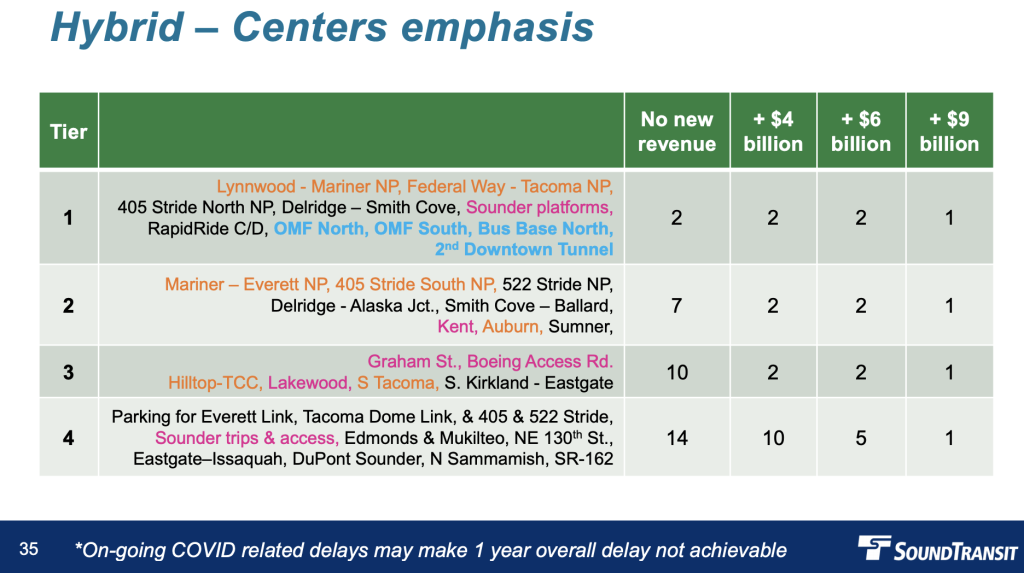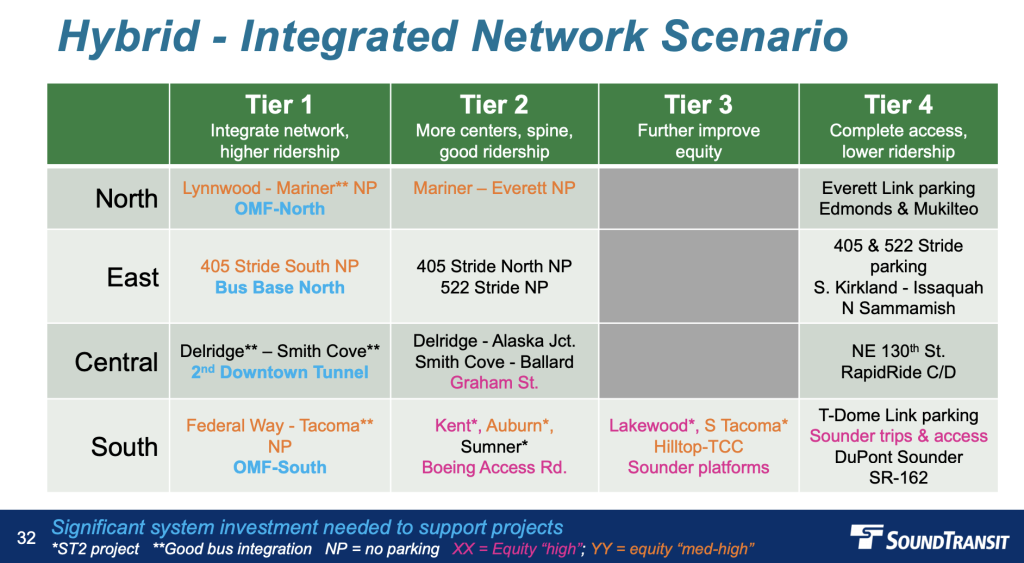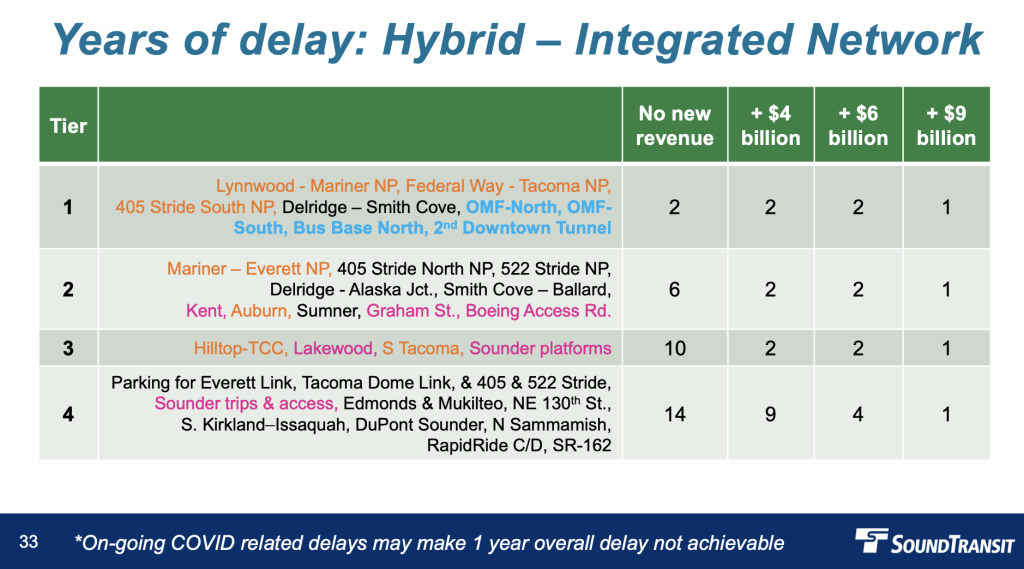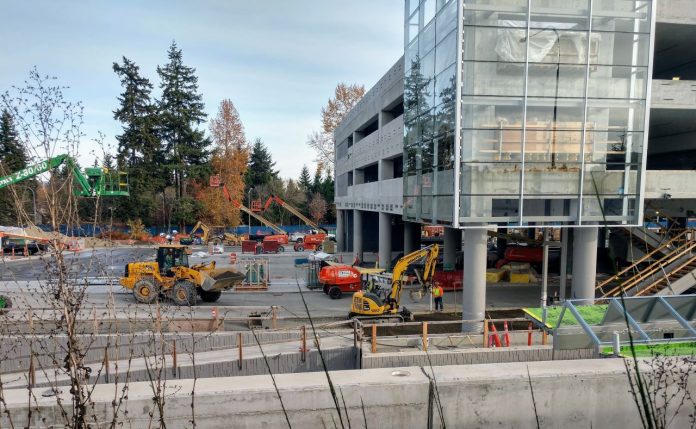
Parking is a huge billion-dollar capital outlay in Sound Transit’s capital expansion program. Delaying construction of parking as part of new transit projects could salvage much of the program, which currently faces an $11.5 billion affordability gap.
At a briefing to the board last week, agency staff presented several additional illustrative realignment scenarios of the Sound Transit 3 capital expansion program — a similar exercise was conducted in February. These scenarios provide a window into the ways projects can be bundled together and delivered. Based on adopted criteria, projects are packaged into tiers and then ranked by years of delay in relation to original delivery dates. This ranking comes in four varieties, depending upon how much additional financial capacity (e.g., additional federal and state revenue, reduced project scopes, and value engineering) is provided, if any.
Of the new illustrative scenarios, the delayed parking strategy was a notably intriguing one. Agency staff prepared it based upon a request by Washington State Department of Transportation (WSDOT) Secretary Roger Millar, who has long questioned the value of parking investments by the agency.
The “delay parking” scenario uses a strategy of smaller incremental light rail projects and separating parking elements of projects into standalone projects. This means that smaller light rail extension segments would be delivered as individual projects — allowing for phasing like Delridge-Alaska Junction, Delgride-Smith Cove, and Smith Cove-Ballard (three projects) versus full West Seattle and Ballard extensions (two projects) — and parking projects could be placed at the back of the line.
By delaying parking, Sound Transit would be able to keep most of the light rail projects closer to their original timelines without any additional financial capacity. Big ones like Lynnwood-Mariner, Federal Way-Fife, and Delridge-Smith Cove would only experience two years of delay. With five years of delay, Smith-Cove, Delridge-Alaska Junction, Mariner-Everett, and Fife-Tacoma Dome could be delivered. However, Eastgate-Issaquah and Hilltop-Tacoma Community College light rail projects would face painful 14-year delays under Sound Transit’s projections.
With modest additional financial capacity ($4 billion), nearly all light rail projects would face just two years of delay. This also has the benefit of salvaging timelines for Sounder regional rail enhancements and Stride bus rapid transit projects to the same period of delay. Stepping up the latter with $6 billion in additional financial capacity means that projects in the lowest tier — including parking — could mean only four years of delay, but presumably further delaying parking could shorten the wait for infill light rail stations, bus projects, and Sounder extension to DuPont. It also bears mentioning that $9 billion or more in additional financial capacity essentially limits all project delays to just over a year.
Incidentally, The Urbanist had sent a letter to the board prior to last week’s meeting asking for consideration of delay or paring back of parking.
Besides the parking scenario, agency staff did share a variety of other scenarios. Looking at these through just the lens of modest expanded financial capacity (an extra $4 billion), these scenarios would do the following:
- The “connecting centers” scenario would largely keep key light rail projects within a two-year delay timeframe, though the lower performing West Seattle and Issaquah-Kirkland extensions would experience serious delays.
- The “equity and phasing” scenario would similarly keep most light rail, Sounder, and Stride projects to small delays, but Denny-Ballard, South Kirkland-Eastgate, and Eastgate-Issaquah light rail extensions would face heavy delays.
- The “equity and significant early investments” scenario presents quicker project delivery for a wider variety of project types but sends many light rail projects to slightly longer delays. It does, however, leave lower performing projects at the back end, which many be a more favorable tradeoff in the eyes of many.
- The “first segments” scenario is a little more scattershot, but largely keeps key light rail projects within a two- to three-year delay.
- The “hybrid centers” scenario pairs parking delay with the connecting centers scenario to deliver most transit projects with only a two-year delay. The main exceptions to this are the Eastgate-Issaquah light rail extension, NE 130th St infill station, and DuPont Sounder extension. Parking and other lower tiered projects would therefore be delayed by a decade to support earlier delivery of the other projects.
- Finally, the “hybrid integrated network” scenario pairs parking delay with a variety of priorities similarly to deliver most transit projects with only a two-year delay. Key projects that would fall further behind include the South Kirkland-Issaquah light rail extension, DuPont Sounder extension, and NE 130th St infill station. Parking and other lower tiered projects would thus be delayed by nine years.
Without any additional financial capacity, all of these scenarios would involve 14-year delays for at least some projects and often about a decade of delay for many planned projects. So invariably, some level of additional financial capacity is likely to be a priority for the board and agency to pursue to bring some semblance of reasonable program delivery. But more than anything, these scenarios show how powerful de-prioritizing parking can be in making transit projects more timely even if a major infusion of revenue is not forthcoming.
Next month, Sound Transit staff will provide an update on the affordability gap. That could go either way, but there does seem to be some optimism that the affordability gap may contract a bit. Any reduced gap will make decisions easier for the program, which are expected to be made this summer. In the meantime, the agency will consult with the board on realignment priorities and begin work on developing plans.
Stephen is a professional urban planner in Puget Sound with a passion for sustainable, livable, and diverse cities. He is especially interested in how policies, regulations, and programs can promote positive outcomes for communities. With stints in great cities like Bellingham and Cork, Stephen currently lives in Seattle. He primarily covers land use and transportation issues and has been with The Urbanist since 2014.

